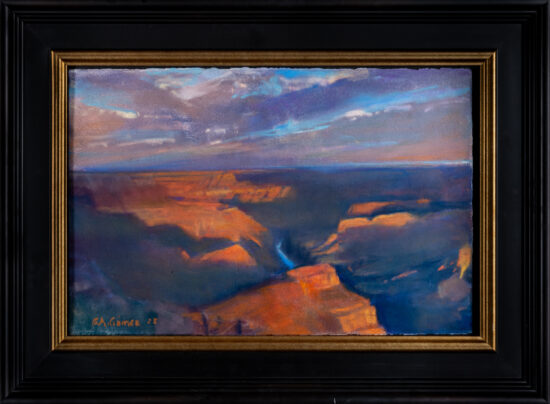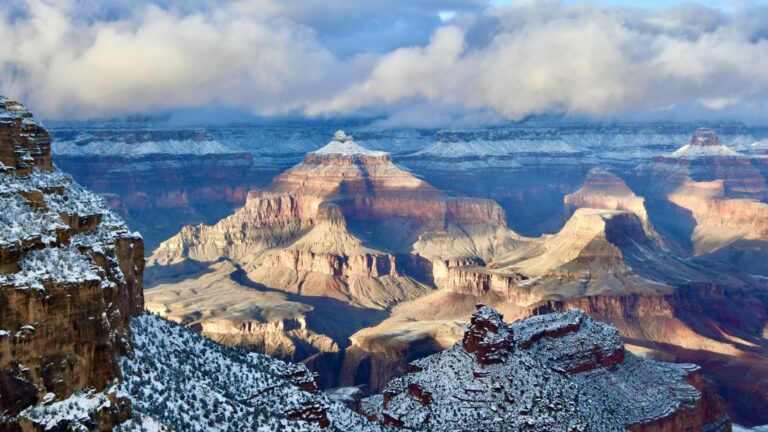The Canyon is Listening: Á-mi-i-evyo, “Yes, I hear you!”
Havasupai religious practitioner Uqualla is in the midst of a pilgrimage from the South Rim to Havasupai Gardens. Those lucky enough to be close by are witnessing the embodiment of a spiritual calling that is reconnecting Uqualla and the Havasupai people to their ancestors’ traditional farming lands.

The scent of burning sage wafts upward, alerting nearby hikers that something special is happening on Gthatv He’e (Coyote Tail, a.k.a. Bright Angel Trail). The melodic sound of chanting echoes off the canyon walls. Havasupai religious practitioner Uqualla is in the midst of a pilgrimage from the South Rim to Havasupai Gardens. Those lucky enough to be close by are witnessing the embodiment of a spiritual calling that is reconnecting Uqualla and the Havasupai people to their ancestors’ traditional farming lands.
“The Havasupai are the guardians of the master altar—the canyon,” says Uqualla, “and the canyon is a constant communicator to everyone who comes into it. Gway-miganavgé means ‘It is telling you something’ in Supai. This is the foremost statement of our tribe.”
Uqualla spent each month of 2022 making full moon hikes into the canyon to give prayers, songs, and gifts to the ancestors at Havasupai Gardens.
“I had a sense that something had to be done . . . our reservation in Supai had been closed during COVID and ancestral energy was coming through to me, telling me I need to remind the guardians, my tribe, of the responsibility that has been gifted to them,” he says.
His vision told him that he would have twelve moons, and in each he would go into the canyon at a cycle opening, when the energies of the spirits are at their widest field of traveling between earth and sky. And so, every full moon in 2022, Uqualla made his walking pilgrimage, awakening the spirits of his ancestors with every step. In 2023, he will continue these journeys once each season.
His sister, Dianna “White Dove” Uqualla, says that it’s important to keep the knowledge of the Havasupai people who lived and thrived in the canyon. “In years past, we have been forgotten, but our family was there from the beginning,” she says.
For thousands of years, the Havasupai (People of the Blue Green Waters) have lived in Grand Canyon, occupying what is now known as the South Rim, with scattered bands of families living and farming where Havasupai Gardens is located. In the years following the establishment of Grand Canyon National Park, the Havasupai were forcibly evicted from their homes and restricted to an area known as Supai Camp. Uqualla’s pilgrimages mark a renewed relationship between the Havasupai and the lands they were forcibly removed from by the National Park Service in the 1920s.
In 2022, the park sought a formal name change request with the United States Board of Geographic Names (USBGN) to rename Indian Garden as Havasupai Gardens. This was approved in November 2022, and work has commenced to update signage, literature, and educational programming.
“The renaming from Indian Garden to Havasupai Gardens is out of respect for the undue hardship imposed by the park on the Havasupai people,” said Grand Canyon National Park Superintendent Ed Keable.
Uqualla says that his presence in the canyon energetically imbues the trail with his ancestral medicinal forces.
“I am an ambassador, a sentinel of their bloodline lineages,” he says. “I am representing my heritage and the canyon appreciates that.”
Uqualla and White Dove encourage visitation to Grand Canyon National Park, as long as guests respect the land they are walking on.
Says Uqualla, “This canyon is placed here for the well-being of all that come to it. It is important that the moment you step into the canyon on the trails, not just the rim, that you give a request for protection and watch before you make that first step.”
He explains that every step we take on a trail in the canyon, we must be filled with good heart intention, so the canyon embraces us and fills us with the information of the ancestors.
“Come and be a part of it. Just be in a heart integrity. Step in. Give it an offering. Hopefully people will be a little more respectful in a personal place. It is your organic understanding of what you are stepping into.”
“I ask permission. I desire your watch. To care for me, to teach me as I walk down into the canyon. This I did. And as we arrived here into Havasupai Gardens—a beautiful area where the water flows, where the grass is green, where the tree people are in watch—there was a calling for ceremony. Not for us, but for the ancestors. They have not seen a ceremonial procession come down this canyon in many decades, and this is something that should be done continuously. We arrived here in Havasupai Gardens, to drink of its waters, to sing to the waters, to allow the smoke to rise from the medicine plants, to do that blessing, that divination. What was done in ceremony was to allow for the offerings to the elementals, to give the medicine of the red ochre, that was placed on the face, so that one could see through the eyes of the Spirit of the canyon.”
—Uqualla
Author: Mindy Riesenberg



